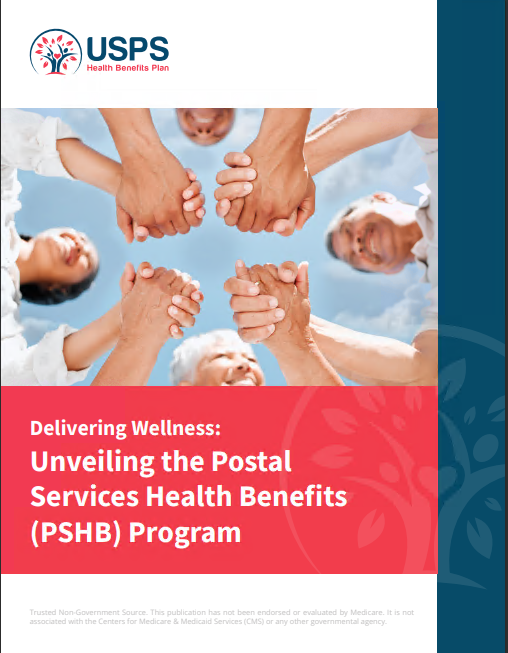Key Takeaways:
-
Understanding coinsurance and cost-sharing in your PSHB plan can help you budget for healthcare expenses and avoid surprises.
-
Knowing the details of your PSHB benefits ensures smarter decisions about in-network and out-of-network care.
Breaking Down Coinsurance and Cost-Sharing
As a Postal Service worker enrolled in a Postal Service Health Benefits (PSHB) plan, you might have questions about coinsurance and cost-sharing. These terms can feel a little abstract, but they’re essential for managing your healthcare costs effectively. By learning the ins and outs of your plan, you’ll be better equipped to make informed choices for you and your family.
What Is Coinsurance?
Coinsurance is the percentage of healthcare costs you pay after meeting your plan’s deductible. For instance, if your plan’s coinsurance rate is 20%, you’ll cover 20% of the cost of a medical service, while your plan covers the remaining 80%. Coinsurance applies to a range of services, including specialist visits, hospital stays, and procedures. This means that understanding your coinsurance rate helps you anticipate your share of costs for various treatments.
Your coinsurance rates can vary depending on whether you’re using in-network or out-of-network providers. Sticking to in-network providers usually means lower coinsurance rates, as these providers have negotiated rates with your insurance plan. Additionally, your plan’s structure can significantly affect how much you pay overall, making it essential to understand your options.
The Role of Deductibles
Before coinsurance kicks in, you need to meet your deductible—the amount you’re responsible for paying out-of-pocket annually. PSHB plans offer a variety of deductible levels, which can influence the cost of your premiums and overall healthcare expenses. High-deductible plans often come with lower premiums, while low-deductible plans have higher premiums but reduce your upfront costs for care. Understanding this balance is crucial to making the best choice for your budget.
Your deductible resets each year, so planning for these costs annually can help you better manage your healthcare expenses. For instance, if you anticipate significant medical needs in a given year, opting for a plan with a lower deductible might make sense despite its higher premiums.
Understanding Cost-Sharing Basics
Cost-sharing refers to how you and your plan divide the expenses for covered healthcare services. Besides coinsurance, cost-sharing includes copayments and deductibles. Let’s break these down further to understand their roles.
Copayments: The Flat Fee
A copayment, or copay, is a fixed amount you pay for specific healthcare services, such as doctor’s visits or prescriptions. For example, you might pay $30 for a primary care visit and $60 for a specialist. Unlike coinsurance, copays don’t depend on the total cost of the service, making them easier to budget. Some services might even have no copay, particularly for preventive care, which your plan may fully cover.
Copays are often due at the time of service, so keeping track of these expenses is crucial. They can add up quickly, especially if you or your family members require frequent visits to specialists or other providers.
Out-of-Pocket Maximums: Your Financial Safety Net
Every PSHB plan includes an out-of-pocket maximum—the most you’ll pay for covered services in a calendar year. Once you hit this limit, your plan covers 100% of your healthcare costs for the rest of the year. This cap includes your coinsurance, copayments, and deductible payments but excludes premiums. By knowing this figure, you can prepare for worst-case scenarios without financial strain.
Planning for the out-of-pocket maximum is especially important if you or a family member has a chronic condition or upcoming major medical procedure. It serves as a financial safety net, ensuring you’re protected against overwhelming costs.
In-Network vs. Out-of-Network Costs
One of the most significant factors affecting your out-of-pocket expenses is whether you use in-network or out-of-network providers. These decisions can dramatically influence your healthcare budget.
Why In-Network Matters
In-network providers have agreements with your plan to offer services at reduced rates. By staying within your network, you’ll typically enjoy lower copays, coinsurance, and deductibles. Your PSHB plan’s directory will help you find in-network providers quickly, ensuring you can make informed choices about your care.
The Cost of Going Out-of-Network
Using out-of-network providers often means higher out-of-pocket costs. You’ll face higher coinsurance rates, and these services may not count toward your in-network out-of-pocket maximum. Plus, you’ll be billed for the difference between the provider’s charges and what your plan reimburses—a process called balance billing. This extra cost can catch you off guard if you’re not prepared.
Understanding how out-of-network costs work ensures that you’re not surprised by unexpected bills. If you need to use an out-of-network provider, verifying their costs beforehand can help you avoid financial stress.
Balancing Costs With Your Healthcare Needs
Choosing the right PSHB plan involves finding a balance between monthly premiums, deductibles, and out-of-pocket costs. Here are some strategies to help you optimize your plan and minimize expenses.
Assess Your Healthcare Usage
Take a look at your past healthcare expenses. If you rarely visit the doctor or use minimal services, a high-deductible plan with lower premiums might be a good fit. Conversely, if you frequently see specialists or have ongoing medical needs, a low-deductible plan can save you money in the long run. Reviewing past records can give you a clear picture of what plan structure aligns with your typical usage.
Plan for Unexpected Costs
Healthcare needs can change suddenly. Even if you’re healthy, it’s wise to choose a plan with a manageable out-of-pocket maximum. This ensures you won’t be overwhelmed by medical bills if unexpected health issues arise. Balancing this with a reasonable premium helps ensure you’re not overpaying for coverage you don’t need.
Maximizing Preventive Care
Preventive care services, such as annual check-ups, vaccinations, and screenings, are often covered at no cost under PSHB plans. Taking advantage of these benefits can help you stay healthy and catch potential issues early, avoiding costly treatments down the road. Regular preventive care can also help manage chronic conditions more effectively, reducing long-term expenses.
Preventive care is not just a benefit; it’s a strategy for maintaining your health. Make sure to schedule these services as part of your healthcare routine to minimize future risks.
Tips for Managing Your Healthcare Costs
Use Telehealth Services
Many PSHB plans include telehealth options, allowing you to consult with healthcare providers remotely. Telehealth visits are often less expensive than in-person appointments and can save you time and money. This option is particularly useful for routine consultations or follow-ups that don’t require a physical examination.
Review Your Explanation of Benefits (EOB)
After receiving care, you’ll get an EOB statement detailing what your plan covered and what you owe. Reviewing these documents can help you identify errors or unexpected charges, ensuring you only pay what’s necessary. Discrepancies in billing are not uncommon, so being vigilant can save you money.
Set Aside Funds for Medical Expenses
Consider using a Flexible Spending Account (FSA) or Health Savings Account (HSA) to save pre-tax dollars for healthcare costs. These accounts can help you manage out-of-pocket expenses and reduce your taxable income. They’re particularly useful for predictable costs, like prescription drugs or planned procedures.
Avoiding Common Pitfalls
Ignoring Plan Details
Skipping the fine print of your PSHB plan can lead to surprises. Take the time to understand your coinsurance rates, deductibles, and copayment amounts. Knowing these details upfront can prevent unexpected bills and give you greater control over your healthcare decisions.
Not Staying In-Network
Out-of-network care is one of the quickest ways to rack up healthcare costs. Always confirm that your provider is in-network before scheduling appointments. A quick check can save you hundreds of dollars in unnecessary expenses.
Overlooking Annual Changes
PSHB plans may update their benefits, premiums, and networks each year. Reviewing your plan during Open Season ensures you’re aware of any changes that might impact your healthcare costs. This review can also help you decide whether switching plans makes financial sense.
The Value of Staying Informed
Staying informed about your PSHB plan’s coinsurance and cost-sharing structure empowers you to take control of your healthcare spending. Knowledge is your best tool for navigating the complexities of health insurance and ensuring your plan works for you. Being proactive in understanding your benefits helps you avoid unnecessary stress and expenses.
Taking the Next Steps in Your PSHB Journey
By understanding the details of coinsurance and cost-sharing in PSHB plans, you can make smarter choices about your healthcare. Whether it’s staying in-network, using preventive care, or balancing premiums with out-of-pocket costs, every decision adds up to better health and financial security. Equip yourself with the knowledge to make the best choices for your needs and enjoy the peace of mind that comes with a well-managed plan.











